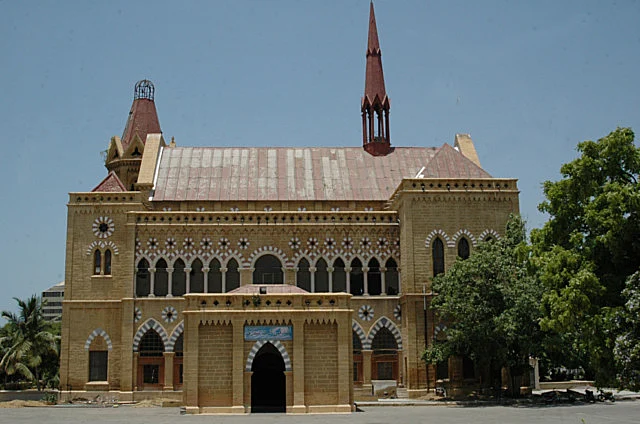Karachi
In a sprawling metropolis synonymous with crime, political violence and creeping Talibanisation, few people are interested in wandering the streets to explore hidden heritage.
Muggings and carjackings are perils of daily life, while many of the architectural gems of the city of Karachi in southern Pakistan are hidden in the roughest parts of town, far away from the suburban sprawl where most well-heeled city dwellers live.
However, one enthusiastic amateur is encouraging his fellow Karachiites to ignore the dangers and explore a city full of once handsome 19th-century buildings, many in a state of advanced decay. “Karachiites are completely unaware of the heritage they have,” said Farooq Soomro, a young office worker who spends his spare time leading intrepid explorers on tours of the metropolis. “When visitors used to ask me what to visit, I realised I didn’t know my own city.”
For the past few years he has helped to spark local interest in the architectural curiosities dotted around town by posting photos and stories on his Karachi Walla website. Articles on meeting houses built for the city’s community of Goan Christians, and Sikh gurdwaras highlight the faded grandeur of the city’s colonial period and the cultural diversity of what was once one of the world’s great ports.
But many of the attractions are hidden away in a city that grew rapidly from a fishing village in the early 1800s into today’s metropolis of 23 million people. Soomro discovered that even people who are enthusiastic sightseers on their travels abroad were almost ignorant of what was available on their doorstep.
Social divide
“It’s partly because of the infamous social divide between Clifton and Defence people and the rest of Karachi,” he says, referring to the city’s upmarket areas, which offer little more than miles of suburban sprawl and the occasional shopping mall. “Most of the history lies on the other side of the bridge.”
But among some university graduates attitudes are changing, Soomro says. “They have started this movement of arranging walks around their city because they realise they are missing out,” he said.
Even the city’s handful of government-supported heritage sites are unfamiliar to many. When Soomro posted pictures online of the former residence of Pakistan’s revered founder, Mohammad Ali Jinnah, he was taken aback by the level of interest in what should be one of the country’s best-known sites.
Despite its well-ordered museum and location near the city’s international hotels, the building known as Flagstaff House, designed by a member of Karachi’s now vanished Jewish community, attracts only a trickle of visitors. There are even fewer callers at Wazir Mansion, the single-floor flat where Jinnah’s family lived when he was a child.
The custodian of Wazir Mansion said visitor numbers had tailed off as security declined in the city. The narrow streets of Saddar Town, the neighbourhood where Jinnah’s childhood home is tucked away, are considered a no-go area for many.
Vulnerable
The once elegant commercial heart of the city gradually lost out as the well-to-do moved out. With heritage preservation a low priority, many of the old buildings, some of which are little more than grand facades, are vulnerable to rapacious “land grabbers”.
Street crime has become rife in a city where militants and gangs, often linked to ethnic or political groups, fight vicious turf battles.
But those who do venture out on Soomro’s tours are often stunned by what they find. “I’m just in awe right now,” said Aniya Fatima, a young executive, during a Karachi Walla tour of one of the city’s churches. “I knew there were churches but I didn’t know we had churches this nice.”
— Guardian News & Media Ltd
Sign up for the Daily Briefing
Get the latest news and updates straight to your inbox
Network Links
GN StoreDownload our app
© Al Nisr Publishing LLC 2025. All rights reserved.
